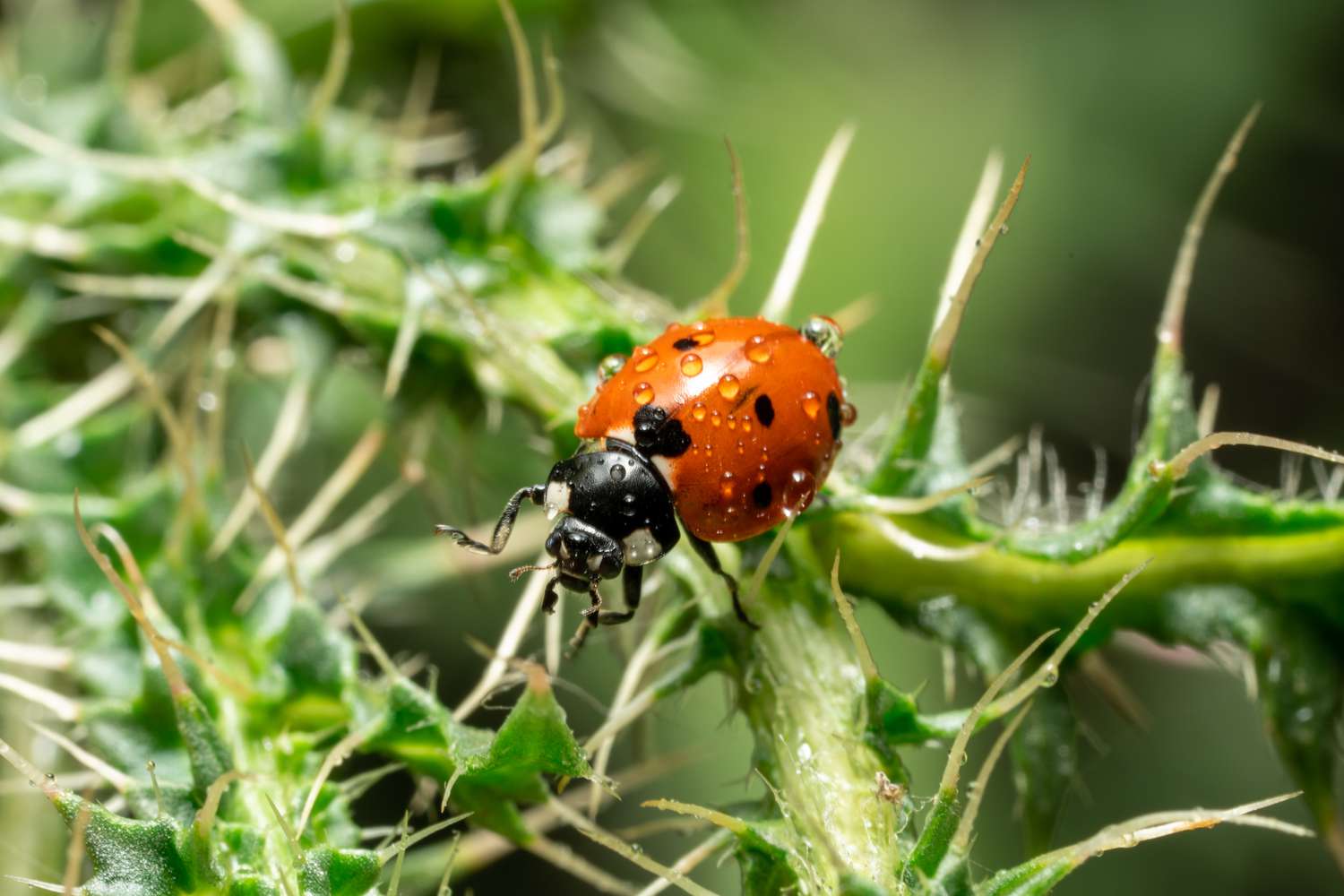Ladybugs, or girl beetles, are bugs throughout the beetle family. There are about 5,000 species of these tiny bugs, and most of them are pretty helpful. Although best typically known as a crimson insect with black spots, ladybugs can be found various colors, and some have stripes or no markings the least bit.
These little hard-shelled creatures are harmless to individuals and helpful to gardeners. From their hidden wings to their experience for warding off predators, uncover fascinating particulars in regards to the lovable ladybug.
1. Technically, They’re Lady Beetles, Not Ladybugs
These small bugs are further exactly known as girl beetles or ladybird beetles. Ladybug is the American title given to the Coccinellidae family of beetles. Bugs have needle-like mouthparts and a largely liquid weight-reduction plan, whereas beetles can chew and luxuriate in munching on crops and bugs.
Beetles even have arduous wings, whereas bugs have softer wings or no wings the least bit. Beetles endure an entire metamorphosis, whereas bugs look concerning the an identical all by means of their complete life cycle.
2. They Aren’t All Purple With Black Spots
Though most people take into account ladybugs as crimson with black spots, not all species of ladybugs seem to be that. There are about 5,000 species of ladybugs on the earth, along with 450 in North America. Together with crimson, they could even be yellow, orange, brown, pink, and even all black. Their spots, which some ladybugs do not need the least bit, can look further like stripes.
3. They Devour a Lot of Pests
Ladybugs earn their place as an interesting insect based mostly totally on their most popular weight-reduction plan of plant-damaging bugs, along with aphids. Ladybugs lay plenty of of eggs in aphid colonies, and as rapidly as they hatch, the larvae immediately start feeding. An grownup ladybug would possibly eat as many as 5,000 aphids in its lifetime.
These useful bugs moreover eat fruit flies, thrips, and mites. Completely totally different species of ladybugs have completely totally different meals preferences. Whereas many prey on yard pests, some, identical to the Mexican bean beetle and the squash beetle, feed on crops and are unwelcome pests themselves.
4. They Hibernate in Winter
Instead of heading south for the winter, ladybugs dwelling in colder climates enter diapause, a form of insect hibernation. When the aphids begin to vanish, ladybugs discover that winter is coming and flock collectively to breed correct sooner than coming into hibernation. All through this period, which can last as long as 9 months, they keep on their fat reserves, which preserve them until spring when bugs grow to be plentiful as soon as extra.
5. Their Spots Operate a Warning
The spots and sensible colors on ladybugs are normally not for appears alone. They’re meant to warn would-be attackers that this beetle tastes horrible. Previous their warning colors, ladybugs have one different line of safety: They emit foul-smelling blood from their leg joints after they’re startled. This yellow liquid is toxic to many ladybug predators resembling birds and small mammals.
When all else fails, ladybugs are recognized to play lifeless, giving them a third safety mechanism in a world of eat or be eaten. They aren’t sometimes preyed upon attributable to all of this security, nevertheless some insect species — assassin bugs, stink bugs, and spiders — eat ladybugs.
6. Their Establish Is Legendary
Legend has it that the “girl” in girl beetle dates once more to the Middle Ages. The story is that farmers’ crops had been being damaged by swarms of aphids. Nevertheless after the farmers prayed to the Virgin Mary for help, the ladybugs arrived, ate all the aphids, and saved the day. The farmers had been so grateful that from then on they referred to the bugs as “Our Lady’s beetles.”
7. They May Eat Their Private Eggs
Female ladybugs lay as many as 1,000 tiny gold-colored eggs all through a single season, nevertheless not all of the eggs make it to maturity. Whereas they wish to put their eggs on leaves coated with aphids, when prey is in short present, the ladybugs would possibly eat the eggs and larvae.
The reality is, ladybugs plan ahead for present shortages; when meals is scarce, ladybugs lay infertile eggs to produce for his or her offspring.
8. They Have Hidden Wings
Very like butterflies, ladybugs endure 4 phases sooner than they full their metamorphosis. They begin as tiny eggs that hatch into larvae that resemble tiny spiny alligators. Then they begin the pupal stage, which lasts spherical two weeks. Of their closing half, they grow to be grownup ladybugs and their hidden wings appear.
Grownup ladybugs have a recognizable clear dome kind, and their forewings are protected by an outer shell, or elytra. Beneath the outer shell is a pair of thin hind wings that unfold at a velocity of 0.1 seconds and are significantly greater than the ladybug’s physique. As quickly as unfolded, ladybug wings switch at a charge of 85 beats per second.
9. Ladybugs’ Numbers Are Declining
Researchers discovering out a decline in native ladybugs in america and Canada theorize that the inhabitants low cost is also due to the introduction of non-native species, native climate change, land-use modifications, sickness, or shifts throughout the availability of prey. In an effort to hint ladybug populations, entomologists at Cornell Faculty created the Misplaced Ladybug Problem, a citizen-based effort to establish, {{photograph}}, and report on ladybugs all through North America.
